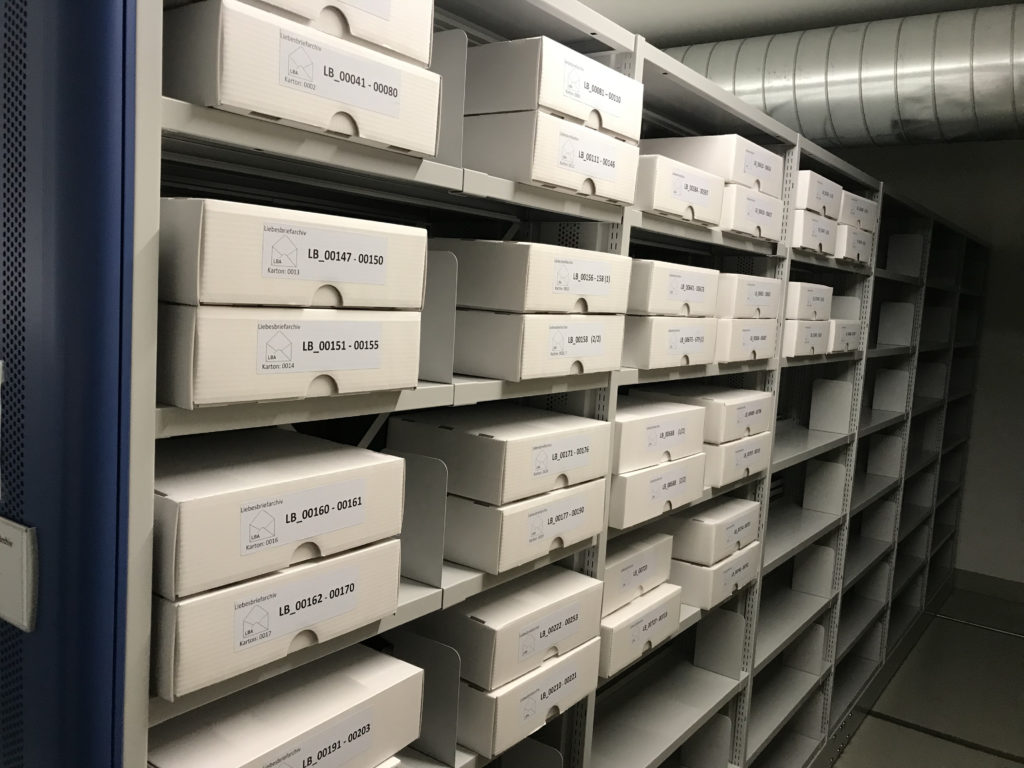All donated letters that find their way into the Love Letter Archiv, whether they are individual letters, bundles, or entire correspondences (convolutes), are carefully reviewed, sorted, and cataloged.
Since every letter donation is different, each donor must include a contract regulating the use of letters with his/her submission. In addition, a contract regulating the transfer of rights for use in scientific research and publication can be attached. The contractually stipulated regulations affect the archiving process, for instance regulating which kind of information about the love letters may be recorded in the archive’s database. This database, the LBA catalog, contains non-sensitive information on all letters currently archived.
All donations go through a five-step cataloging and archiving process, to ensure the unique character of each letter is captured and to maintain a well-organized database that correctly records information on usage rights and helps love letter researchers conduct research.
The five steps of cataloging and archiving love letters
1. Each individual convolutes/letters is assigned a unique archive signature: LB_NumberofConvolute.NumberofLetter.
2. The letters together with corresponding contracts as well as possible accompanying information are scanned to create additional digital copies. These copies are saved as PDF files with the appropriate signature. In addition, individual images of the letters are saved.
3. For the database of the Love Letter Archive catalog, additional information (metadata) is collected for each letter donation:
- Information about the creator of the collection (donor):
For example, acquisition status (e.g., estate), date received, cover letter, and user agreement. - Information about the collection:
For example, time period (e.g., 1940s, postwar), collection status (e.g., donation, loan), type/condition (original, transcript, copy), etc. - Details about accompanying materials:
For example, photographs, newspaper clippings, envelopes, pressed flowers, photographs, images of saints, locks of hair, etc. - Details about individual letters:
Date of individual letter (if any), place, country and state (if any), type of media (e.g., postcard, field mail), number of sheets, number of pages, etc.
4. Letters, along with any accompanying material, are filed in acid-free archival paper folders.
5. Consecutive numbers of archive folders are packed into archive boxes, which are then stored in the archives of the Koblenz University Library.
